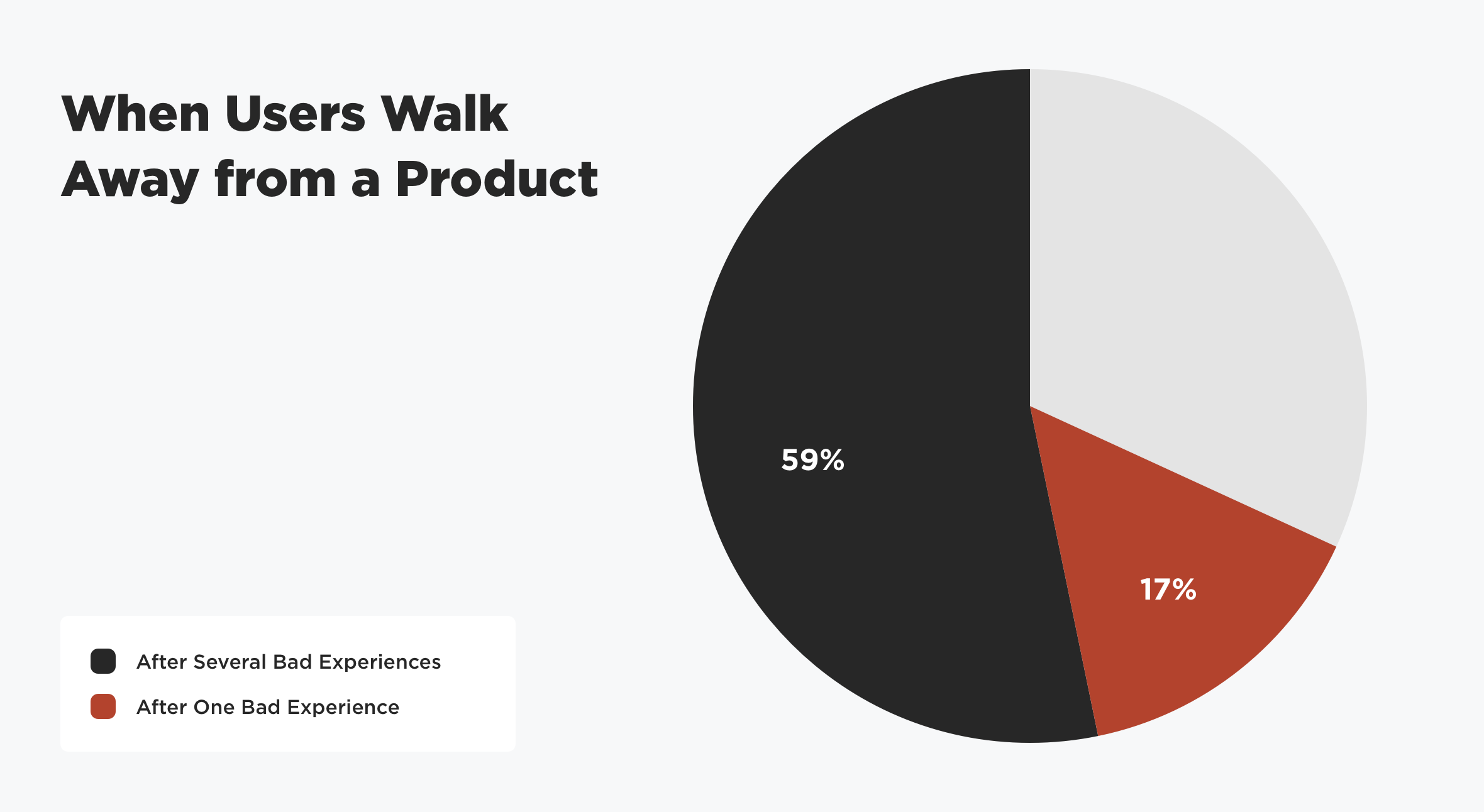Good User Experience is Central to Product-Led Growth

The Experience Success Ladder can be a useful way to measure the true value of your UX maturity. But can it also help you map your way to product-led growth?
You bet it can.

Product-led growth marks a shift in mindset among both consumers and businesses. Tech-savvy users today demand products that are easy to use, intuitive, and elegant. Increased competition makes it easier to abandon products or services that don't live up to those demands.
User experience has always been important, but the baseline expectations have changed. It’s no longer enough to deliver a summary of your product and a friendly welcome email. From the beginning, users expect high-touch personal experiences that provide real value.
Here are three key ways that UX is crucial to product-led growth.
UX Drives User Acquisition
Business leaders are often focused (for good reason) on conversion rates. They want users who try the product to buy the product. The key to improving conversion rates is providing a personalized onboarding experience. What do you need to build a personalized onboarding experience? A solid understanding of your users as people with specific needs.
Recent studies show that 75% of B2B buyers prefer to buy from a website rather than a sales rep and 21% of users abandon an app after one use. It’s no longer enough to provide a Functional and Usable first-time user experience.
Successful user onboarding comes from a deep understanding of what users need to achieve their goals. You have to address their challenges, fears, hopes, and dreams. Each step of the acquisition process must reinforce their motivation and remove obstacles.
In other words, your user onboarding needs to feel comfortable.
The good news? This isn’t as difficult to pull off as it once was. There are many marketing and onboarding products and tools available that automate how you collect and manage data. The bad news is that your competitors also have access to these tools.
The real differentiator is not automated data. You need to help your users feel understood. They want to feel like you’re guiding them through the process to achieve their goals, not only to buy your product.
There isn't a tool that can do that on its own. It takes deep research, design thinking, and thoughtful iterations. It requires user empathy.
If that sounds expensive, that’s because it is. But the cost comes back in savings of energy, time, and money when users don't bail the first time they experience your product.
UX Encourages User Retention
The only thing worse than losing potential customers is losing existing customers. How do you stop people from abandoning your product? By removing any and all friction that stands in their way.
The biggest friction point for most users today is time. They want things to be easy and fast. If you’re not investing in taking the friction out of your user experience, you’re limiting your potential for product-led growth.
A PwC report found that 59% of people in the U.S. will walk away after several bad experiences even if they love a product. 17% percent will do so after only one bad experience. The stakes are high and you don’t have a lot of chances to get it right.

What’s shocking in our experience with clients is not that they don’t know how to fix problems for their users. They haven't gotten around to doing it. Because of bureaucratic inertia, poor product management, or lack of time and money, they're ignoring the little things that could make a big difference.
We’ve helped clients cut customer service costs in half by putting answers to customers' most common problems on the front page of their website. The reduced call volume alone led to more efficient operations, and it delighted customers to get their problems solved.
Comfort drives habits. Think of your favorite golf driver, tool, or pair of shoes. They deliver reliable results time again without you having to think about it. Users and customers want your product to be their favorite pair of shoes. They want to feel confident they'll get the results they need every time they use it, and they want to feel comfortable in the process.
If your product remains functional and usable, then it's stuck. You're not helping add value to your customers' efforts to get the job done. Product-led growth requires that you provide a baseline level of comfort to users while innovating to deliver delightful and meaningful experiences.
UX Builds User Loyalty
The Holy Grail for any product or service is a loyal customer. That’s what we’re all striving to cultivate. In product-led growth, you’re not looking to sell the product to a customer and move on. The ultimate goal is product usage and the best way to encourage usage is - wait for it - user experience.
The key to loyalty is love. Users need to love your product and rave about it to others. They need to feel it’s an essential part of their lives. In short, they need to feel you know what they need before they even know it.
This is where the Meaningful and Delightful rungs of the Experience Success Ladder come into play. Users won’t come back to your product unless they feel it adds meaning and real value. If they’re not using your product on a regular basis, they’re likely not feeling that value and meaning.
Loyal customers and users drive exponential returns on investment. Remember all that money you saved on marketing and customer service by building a better onboarding experience? That's now available for innovations that will create real meaning and drive loyalty.
When your product delivers value on a consistent basis, yo'll start to feel the pull of true product-led growth. The trick is understanding the real value of your product. How do you deliver an experience that improves users' lives at a cost that is sustainable? Many start-ups find a bit of fool's gold through marketing-led approaches that bribe users into using the product. They offer unsustainable promises to make a land grab on market share.
That’s throwing money at the problem for a quick fix - money that they could invest in building a better user experience.
Product-led growth requires that you stay laser-focused on the core value that you’re delivering to users.
Loyal and die-hard customers aren't created overnight. It takes an investment of time and resources to get it right.
Product-Led Growth Drives Returns
Product-led growth is not only a theory. It’s a proven way to outperform the competition. When compared to others, product-led growth companies on average have:
- Faster growth rates (+8% YoY Revenue Growth)
- More revenue (+$280M ARR)
- More revenue at IPO (+$152M ARR)
- Higher net dollar retention (21% Net Dollar Retention)
- Higher revenue multiples (+3.2x)
Product-led growth leads to faster business results by allowing you to make more efficient use of your capital. Embedding good UX into your product makes it more resilient against the competition. It ensures that what you're creating has true value that can withstand volatile market conditions. Most of all, it helps to create loyal and passionate customers who want you to succeed.
How do you start creating product-led growth?
Even though it sounds like it, product-led growth is not a magic bullet. It takes time, energy, investment, patience, and a sound user-centered product strategy. It also helps to know the red flags to look for and the potential pits you might fall into.
That’s where we come in. We’ve helped startups navigate the choppy waters of product-led growth and get acquired by the biggest names in their industries. We're a team of researchers, designers, developers, and UX thinkers who know how to stay hyper-focused on user needs across all streams of product development. We're obsessed with solving problems for users and we can help your team do the same.
Contact us and let’s talk about where your product needs to go next. Whatever rung of the Experience Success Ladder you're currently on, we can help you get to the next level.